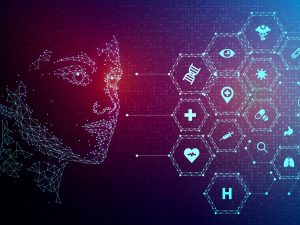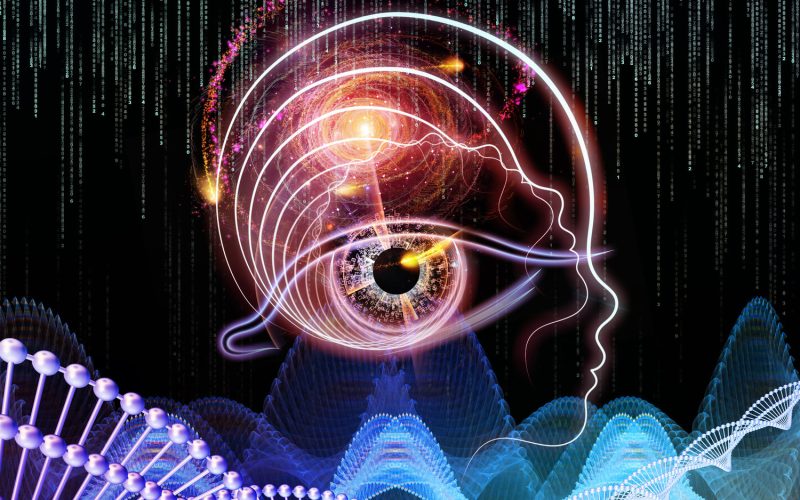The Latest Developments in Neural Networks for AI: Transforming the Future
Neural networks have become the backbone of modern artificial intelligence (AI) systems, driving advancements in machine learning, deep learning, and various AI applications. In recent years, we’ve seen a dramatic shift in the capabilities of neural networks, thanks to new architectures, optimization techniques, and innovative approaches. In this article, we will explore the latest developments in neural networks, their benefits, real-world applications, and examples that highlight their growing influence in AI.
Introduction to Neural Networks and Their Role in AI

At their core, neural networks are computational models inspired by the structure of the human brain. They consist of interconnected layers of nodes (or neurons), where each layer processes information from the previous one. Neural networks are used to solve a wide range of problems, including classification, regression, pattern recognition, and decision-making tasks. Their ability to automatically learn features from raw data has made them essential in fields like computer vision, natural language processing (NLP), robotics, and autonomous systems.
Neural networks have evolved significantly over the past few decades. Initially, basic networks like perceptrons were used for simple tasks. However, with the rise of deep learning—where networks have multiple layers (also known as deep neural networks)—AI systems began to surpass traditional machine learning models in accuracy and versatility. These networks are now capable of tackling complex, real-world problems that require high-level pattern recognition.
The Rise of Transformer Models in AI
One of the most significant recent advancements in neural networks is the development of Transformer models. Introduced in the 2017 paper “Attention Is All You Need” by Vaswani et al., the Transformer architecture revolutionized the field of natural language processing (NLP) and set the stage for advanced AI models like GPT (Generative Pretrained Transformer) and BERT (Bidirectional Encoder Representations from Transformers).
Transformers rely on an attention mechanism that allows the model to focus on different parts of the input data, regardless of their position. This is a departure from earlier models like Recurrent Neural Networks (RNNs), which processed input data sequentially, making them slower and less efficient. The self-attention mechanism in Transformers allows them to process entire sequences of data simultaneously, making them faster and more scalable.
Benefits:
- Scalability: Transformers can handle large datasets and are efficient for both training and inference.
- Contextual Understanding: The attention mechanism enables Transformers to consider long-range dependencies within the data, which is essential for language understanding.
- Pretrained Models: Pretrained Transformer models like GPT-3 have shown unprecedented capabilities in tasks like text generation, translation, summarization, and even code generation.
Example:
- GPT-3: OpenAI’s GPT-3 is one of the largest and most powerful Transformer models to date. It has 175 billion parameters and can generate human-like text, answer questions, and perform specific tasks with minimal fine-tuning. It’s being used in chatbots, content creation, and even code development.
Case Study:
- BERT in Search Engines: Google’s integration of BERT in its search algorithm has drastically improved the understanding of user queries, leading to more accurate and contextually relevant search results.
Exploring Graph Neural Networks (GNNs)
While traditional neural networks excel in tasks like image and text processing, Graph Neural Networks (GNNs) have emerged as a powerful tool for handling data with an inherent structure, such as social networks, molecular data, and recommendation systems. GNNs are designed to work directly with graph-based data, where nodes represent entities, and edges represent relationships between them.
Benefits:
- Capturing Relationships: GNNs excel at modeling relationships and dependencies between entities in graph-structured data, such as connections between users in a social network or bonds in a molecular structure.
- Flexible and Scalable: GNNs can process graphs of varying sizes and complexities, making them adaptable for many use cases.
Example:
- Social Network Analysis: GNNs are used to recommend friends or content by analyzing the connections between users in a social network. By considering not only a user’s data but also the relationships between users, GNNs can make more personalized recommendations.
Case Study:
- Drug Discovery: GNNs have been applied in drug discovery to predict molecular interactions. By modeling molecules as graphs, GNNs can predict the properties of chemical compounds, speeding up the drug discovery process and identifying potential new treatments.
The Role of Neural Architecture Search (NAS) in AI Development
Neural Architecture Search (NAS) is an emerging field that automates the design of neural networks. Traditionally, choosing the right architecture for a deep learning model was a time-consuming process, often requiring expert knowledge. NAS addresses this challenge by using optimization algorithms, such as reinforcement learning (RL), to explore and identify the best architectures for a given task.
Benefits:
- Optimization: NAS can find architectures that are more efficient in terms of accuracy and computational cost.
- Automation: It reduces the need for human intervention in model design, allowing for faster experimentation and development.
Example:
- Google’s AutoML: Google’s AutoML platform uses NAS to design models for specific tasks, such as image classification or natural language processing. This automated approach has led to the development of high-performance models with minimal human input.
Case Study:
- Search for the Optimal Model: In the case of Google’s NAS, the platform has been used to automatically discover models that outperform hand-designed architectures in various domains, including object detection and language processing.
Generative Adversarial Networks (GANs) – A Revolution in AI Creativity

Generative Adversarial Networks (GANs), introduced by Ian Goodfellow in 2014, consist of two neural networks—the generator and the discriminator—that work in opposition to each other. The generator creates fake data, while the discriminator attempts to distinguish between real and fake data. Through this adversarial process, the generator learns to create highly realistic data.
Benefits:
- Data Generation: GANs are highly effective at generating realistic images, videos, and audio that are indistinguishable from real data.
- Data Augmentation: GANs can create synthetic data for training other AI models, especially when labeled data is scarce.
Example:
- StyleGAN3: One of the latest advancements in GANs, StyleGAN3, is capable of generating highly realistic human faces and other complex images. It’s used in areas like art, entertainment, and fashion.
Case Study:
- Deepfake Technology: GANs have been used to create deepfakes, which are highly realistic video or audio clips of people saying or doing things they never actually did. While this technology has raised ethical concerns, it demonstrates the power of GANs in generating convincing media.
The Growth of Self-Supervised Learning in AI
Self-supervised learning (SSL) is a technique where the model learns from unlabeled data by predicting parts of the data from other parts. This approach eliminates the need for costly labeled datasets, which are often in short supply for many real-world problems.
Benefits:
- Reduced Dependency on Labeled Data: SSL reduces the reliance on labeled datasets, making it easier to scale AI applications to large, unlabeled datasets.
- Improved Generalization: SSL has shown the ability to generalize better than traditional supervised learning approaches in some tasks.
Example:
- BYOL (Bootstrap Your Own Latent): BYOL is a recent SSL approach that removes the need for negative samples, which are usually required in contrastive learning. This method has shown to outperform traditional SSL models in image classification tasks.
Case Study:
- OpenAI’s CLIP: OpenAI’s CLIP model, which combines vision and language tasks, uses SSL to learn from millions of images and captions without needing explicit supervision, demonstrating impressive generalization across different tasks.
Reinforcement Learning Advancements
Reinforcement Learning (RL) has made significant strides, especially with the development of model-based RL. RL models learn by interacting with an environment and receiving feedback through rewards or penalties. This feedback loop allows the model to improve over time and make decisions.
Benefits:
- Adaptability: RL can be applied to environments where traditional AI methods struggle, such as robotics or game-playing.
- Optimal Decision-Making: RL is ideal for tasks where sequential decision-making is necessary, like autonomous driving or resource management.
Example:
- DeepMind’s MuZero: MuZero is a model-based RL algorithm that achieves superior performance in games like chess and Go, without knowing the rules of the game in advance.
Case Study:
- Autonomous Vehicles: RL is used in autonomous driving systems, where the vehicle learns to navigate and make decisions based on real-time data from sensors, cameras, and other inputs.
Neuromorphic Computing: Bridging the Gap Between AI and the Brain
Neuromorphic computing is an emerging field that aims to mimic the architecture and functioning of the human brain to create energy-efficient AI systems. Neuromorphic chips are designed to simulate the way neurons and synapses work in the brain.
Benefits:
- Energy Efficiency: Neuromorphic systems consume less power than traditional AI models, making them ideal for mobile and IoT devices.
- Brain-Like Learning: These systems can adapt and learn from experience, much like biological brains.
Example:
- Intel’s Loihi Chip: Intel’s Loihi chip is a neuromorphic processor that can simulate brain-like neural activity. It is designed for edge devices, allowing for real-time AI processing with minimal energy consumption.
Case Study:
- Autonomous Robotics: Neuromorphic chips have been applied in autonomous robotics, enabling robots to make quick decisions and adapt to their environment using very little power.
Multimodal Neural Networks: AI That Understands More Than One Type of Data

Multimodal neural networks combine different types of data—such as text, images, and sound—to improve decision-making and generate richer insights.
Benefits:
- Cross-Modal Understanding: Multimodal networks enable AI systems to process and integrate different types of data for more accurate and nuanced outputs.
- Real-World Applications: These systems are ideal for complex tasks like speech recognition, autonomous driving, and multimedia content creation.
Example:
- CLIP and DALL·E: OpenAI’s CLIP and DALL·E models are examples of multimodal AI systems that can understand and generate both images and text, allowing for tasks like text-to-image synthesis.
Case Study:
- Autonomous Driving: In autonomous vehicles, multimodal networks combine visual data from cameras, LiDAR, and radar to navigate and make driving decisions.
Edge AI and Tiny Neural Networks: AI for Real-World Devices
Edge AI refers to running AI models directly on devices (like smartphones, drones, or IoT devices) rather than relying on cloud-based processing. This is made possible by tiny neural networks, which are optimized for low-power, real-time applications.
Benefits:
- Real-Time Processing: Edge AI enables real-time decision-making, which is critical for applications like autonomous driving and industrial automation.
- Reduced Latency: By processing data locally, edge AI minimizes latency and bandwidth usage.
Example:
- MobileNet: MobileNet is a lightweight convolutional neural network designed for mobile and edge devices, offering high performance while being computationally efficient.
Case Study:
- IoT Devices: In smart home devices like thermostats and cameras, edge AI allows for fast, local processing of sensor data, enabling real-time automation and control.
Conclusion
The field of neural networks is evolving rapidly, with new architectures and techniques continuously reshaping the AI landscape. From the rise of Transformer models that are redefining NLP, to the advent of Edge AI enabling real-time decision-making, these developments are creating opportunities for more intelligent, efficient, and scalable AI applications. As neural networks continue to advance, they will unlock even more innovative solutions across industries, from healthcare to finance, and revolutionize the way we interact with technology.










